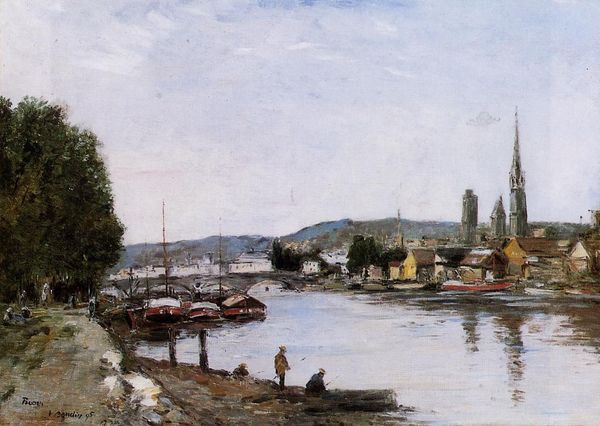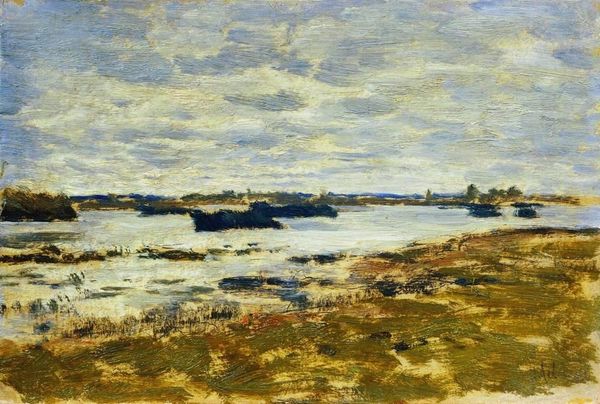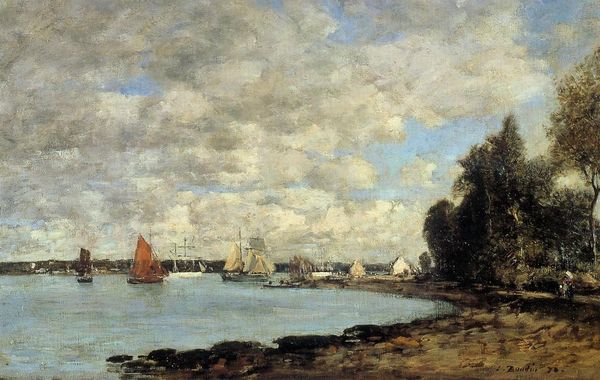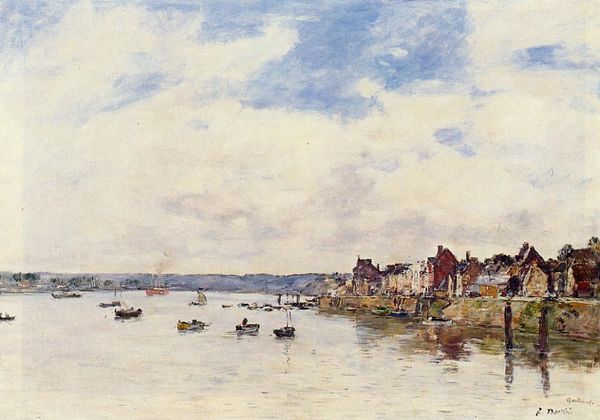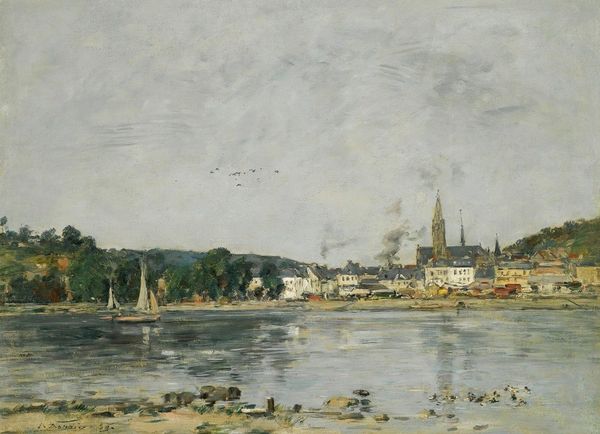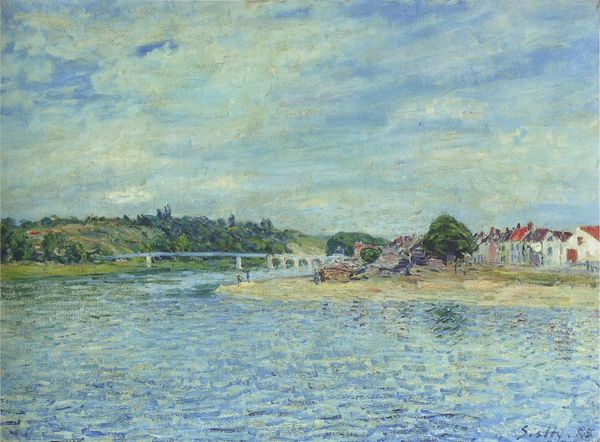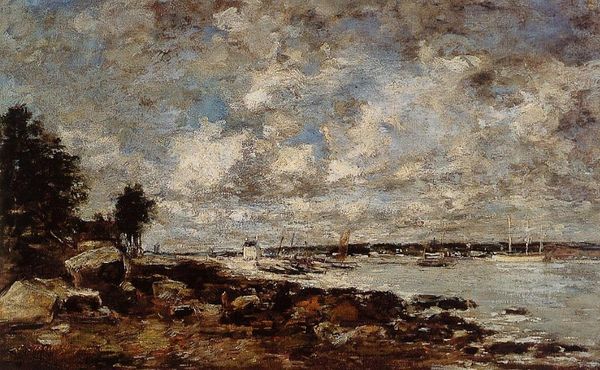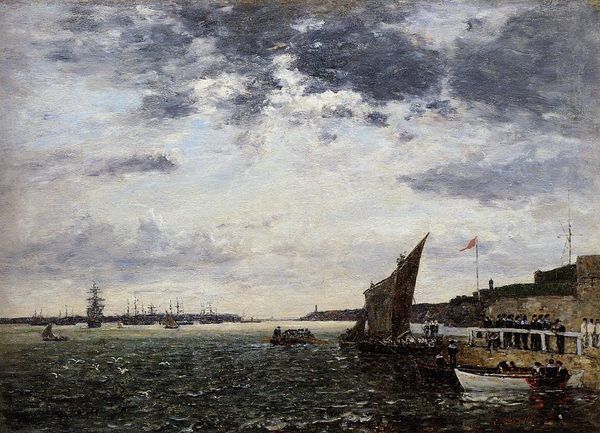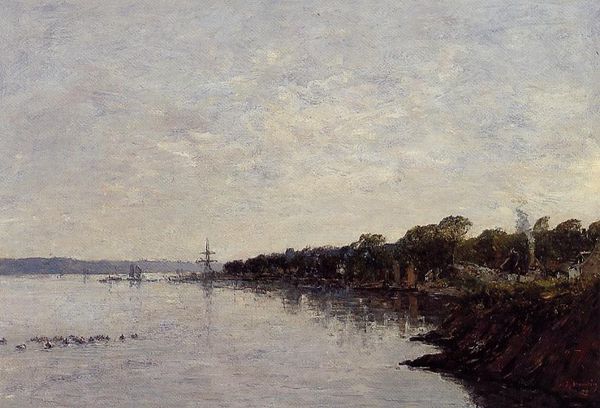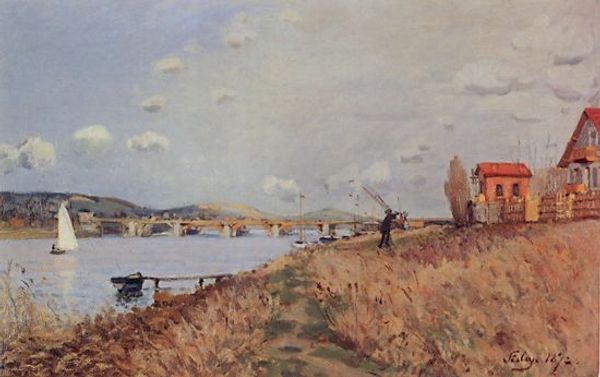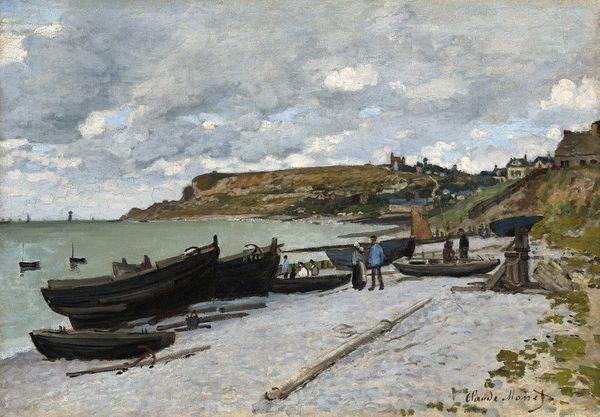
#
tree
#
abstract expressionism
#
sky
#
abstract painting
#
impressionist landscape
#
possibly oil pastel
#
oil painting
#
neo expressionist
#
acrylic on canvas
#
paint stroke
#
watercolor
#
expressionist
Copyright: Public domain
Eugène Boudin, sometime in the mid-19th century, captured Quillebeuf’s surroundings on canvas with oil. The painting's composition is dominated by the sky, a vast expanse of layered clouds that occupies almost two-thirds of the pictorial space. The subdued palette of greys and blues creates a tranquil atmosphere. The land is rendered with a more textured and varied brushstroke, giving the impression of organic growth and decay. Boudin’s handling of light is particularly striking. The water reflects the sky, blurring the line between the two and creating a sense of atmospheric unity. The painting can be seen as an exploration of the sublime. It evokes a sense of awe in the face of nature’s power. But more than that, it is a study in perception, where Boudin challenges us to see beyond the surface and engage with the ephemeral qualities of light and atmosphere. The work destabilizes any fixed interpretation, inviting an ongoing dialogue with the natural world.
Comments
No comments
Be the first to comment and join the conversation on the ultimate creative platform.
